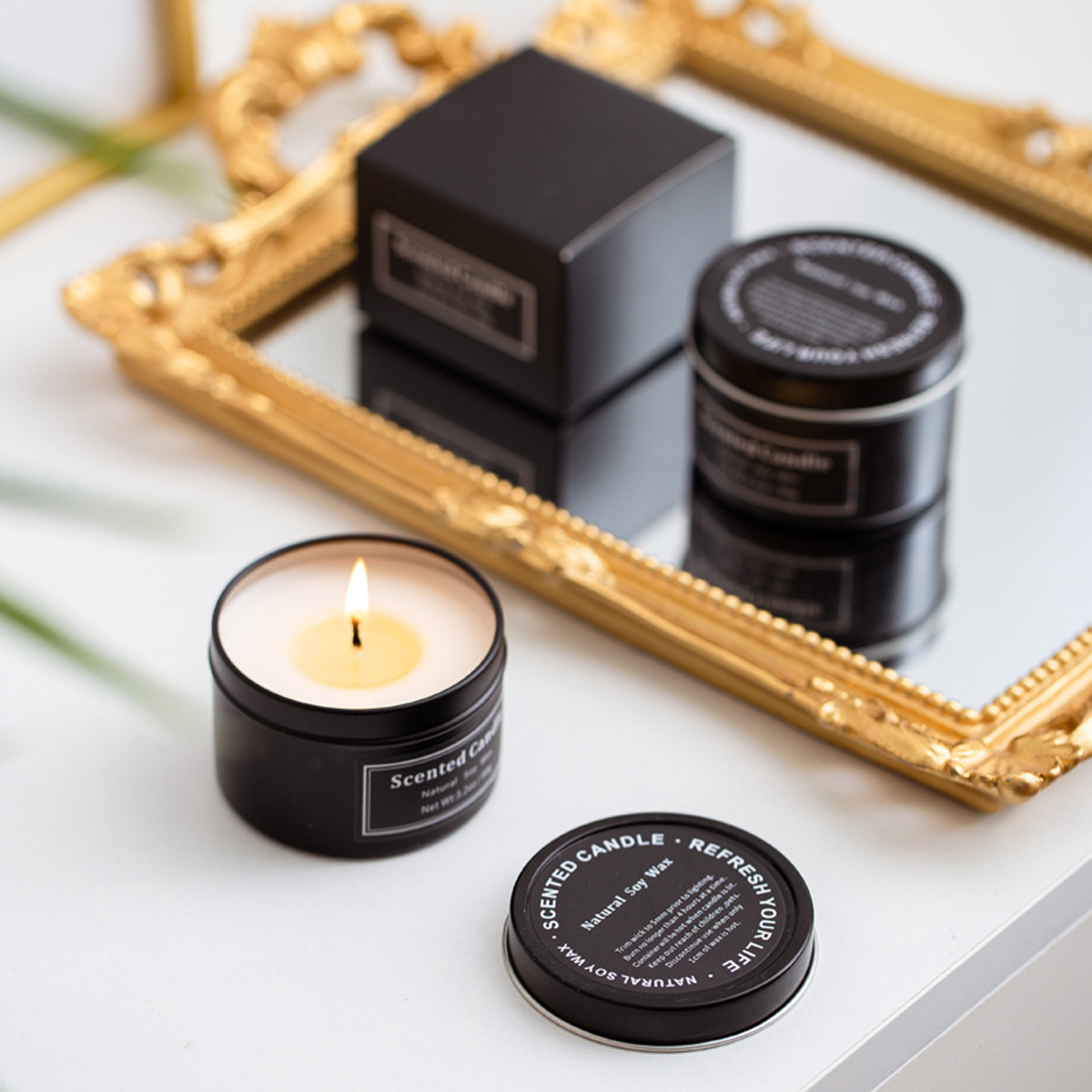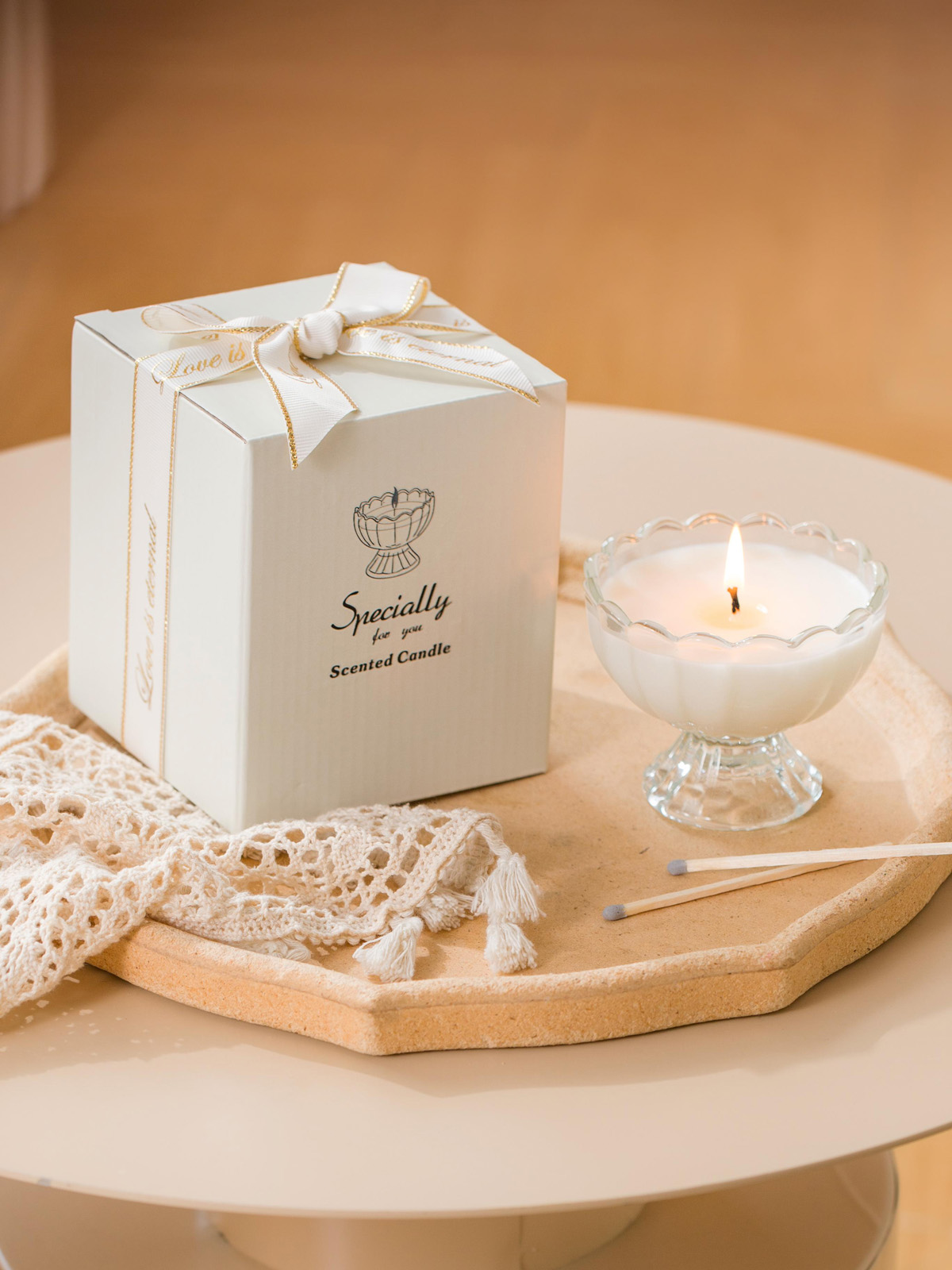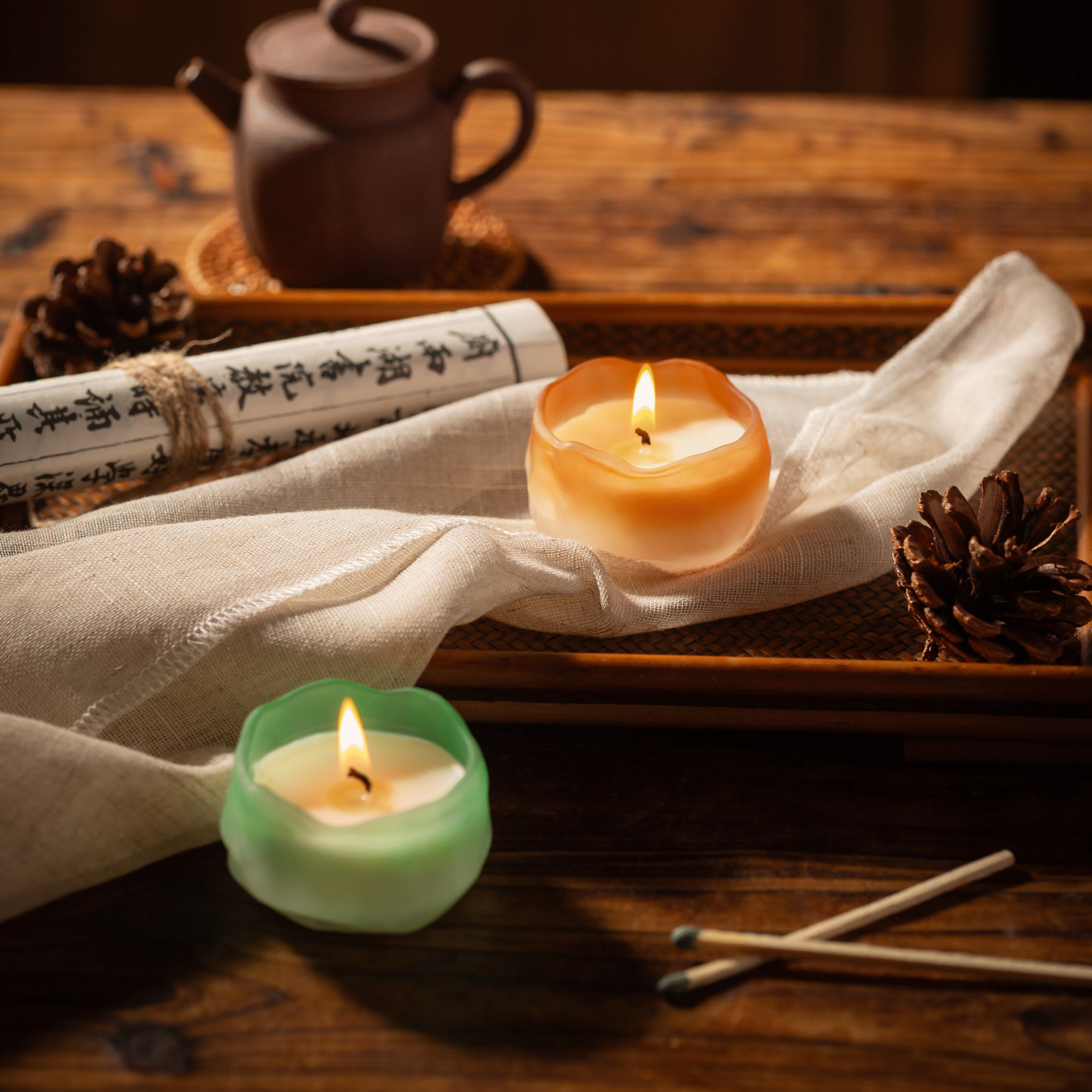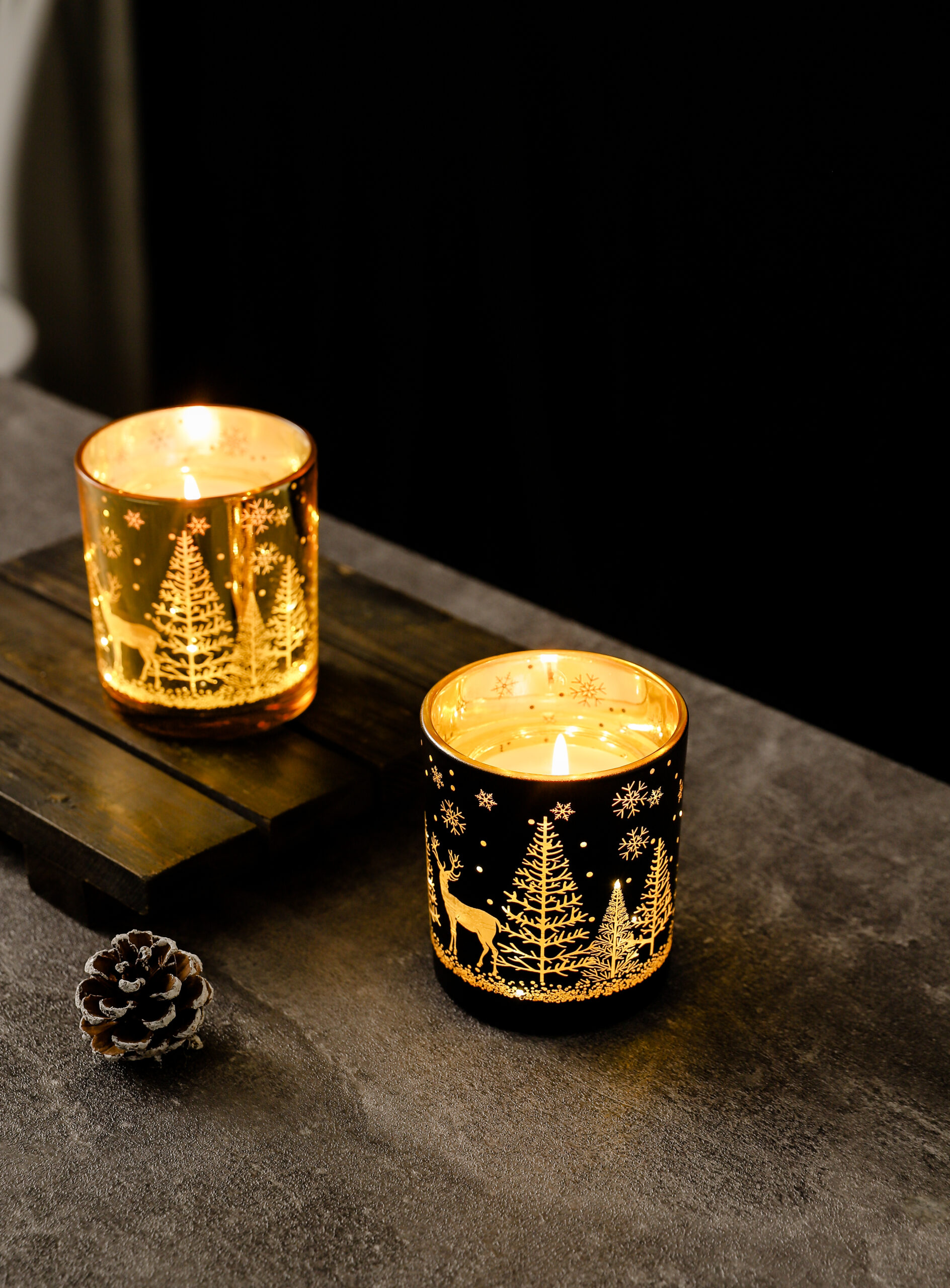The birth of a high-quality scented candle is a perfect fusion of raw material science and sensory art. When the flame jumps on the wax pool, the natural raw materials are releasing healing energy through combustion – from the wax base that determines the burning quality to the fragrance that outlines the memory, each ingredient carries the ultimate pursuit of safety, environmental protection and experience. This article will deeply disassemble the core raw materials of scented candles to help you understand the quality code behind the label.

Wax base: the “skeleton” and “soul” of candles
The wax base is not only a fuel, but also determines the burning characteristics, aroma performance and environmental properties of the candle. The wax base on the market can be divided into natural plant wax, animal wax and synthetic wax. The core of the choice lies in “health” and “sustainability”.
Natural plant wax: the first choice of environmentalists
(1) Soy wax (Soy Wax): the benchmark for clean burning
– Source: extracted from non-GMO soybeans, made into solid wax through hydrogenation process, it is the most popular natural wax base in the world.
– Core advantages:
– Clean combustion: Carbon emissions are 70% lower than paraffin, and only a small amount of water vapor and carbon dioxide are produced during combustion, with almost no black smoke, making it suitable for enclosed spaces such as bedrooms and baby rooms.
– Ultra-long battery life: The melting point is about 46-54°C, and the burning speed is 30% slower than paraffin. A 200g soy wax candle can burn for 40-50 hours, with outstanding cost performance.
– Tips: Soy wax is liquid after melting and can be used directly as body massage oil, which also has skin care functions.
(2) Coconut Wax: A carrier of tropical style
– Source: Saturated fat extracted from coconut oil, often mixed with soy wax (such as 50% soybean + 50% coconut) to optimize performance.
– Core advantages:
– Strong fragrance carrying capacity: It can hold 12-15% of fragrance raw materials, and its fragrance diffusion capacity is 20% higher than that of pure soy wax, which is suitable for creating rich fragrances (such as woody and oriental notes).
– Low temperature combustion: The melting point is about 35-43℃, and the wax pool is shallower during combustion, which is not easy to stick to the wall and can retain the fragrance layer to the greatest extent.
– Natural luster: After solidification, the surface presents a unique marble texture, which adds visual texture to the candle.
(3) Beeswax: Golden wax for air purification
– Source: The natural secretion of bees when building hives, which needs to be extracted by heating and filtering, and the cost is relatively high. It is mostly used in high-end candles.
– Core advantages:
– Air purification: It releases negative oxygen ions during combustion, which can absorb pollutants such as dust and second-hand smoke in the air. It is known as “breathing wax”.
– Natural aroma: It has a light honey scent, which can create a warm and healing feeling when paired with citrus and floral notes. It is suitable for meditation and reading.
– Super long life: The melting point is as high as 62-67℃, and the burning speed is extremely slow. A 100g beeswax candle can burn for more than 60 hours.
Synthetic wax: Potential risks behind cost-effectiveness
(1) Paraffin wax: a by-product of the petroleum industry
– Source: It is extracted from the residue after petroleum refining gasoline. It is the cheapest wax base and accounts for more than 70% of the market share.
– Controversy points:
– Health risks: It releases harmful chemicals such as toluene and benzene when burned. Long-term use may irritate the respiratory tract. The World Health Organization (WHO) recommends avoiding use in confined spaces.
– Environmental burden: It is a non-renewable resource, with high carbon emissions during the production process. The wax liquid cannot be naturally degraded after melting.
(2) Palm Wax: A Conflict Between Hardness and Environmental Protection
– Source: Extracted from palm oil, it has high hardness and is suitable for making columnar candles or complex shapes.
– Duality:
– Advantages: Long burning time, a natural frost texture can be formed on the surface, and the visual effect is unique.
– Controversy: Traditional palm oil planting leads to the destruction of tropical rainforests (85% of the world’s palm oil comes from the original forests of Indonesia and Malaysia). It is recommended to choose sustainable palm wax certified by RSPO.

Fragrance: the “Memory Gene” of Candles
Fragrance is the soul of candles. It directly connects to the limbic system of the brain through the olfactory pathway to awaken emotions and memories. The core of high-quality fragrance lies in the balance between “natural raw materials” and “safety certification”.
Natural fragrance: the healing code of plants
(1) Essential oils: the liquid gold of plants
– Extraction method: extracted from plants through distillation (such as lavender, rosemary), cold pressing (such as citrus), solvent extraction (such as rose, jasmine) and other processes.
– Core value:
– Aromatherapy effect: lavender helps sleep, mint refreshes, cedar relieves anxiety, and each essential oil is a natural mood regulator.
– Pure ingredients: does not contain phthalates (plasticizers) and artificial colors, suitable for pregnant women, children and sensitive people.
– Limitations: Some rare essential oils (such as rose and sandalwood) are expensive and easily volatile when exposed to high temperatures, and need to be used with a stable wax base (such as coconut wax).
(2) Natural absolutes and concentrates: concentrated plant essences
– Features: obtained through solvent extraction, the fragrance is richer and longer-lasting than essential oils, and is often used in high-end perfumes, such as tuberose absolute and vanilla absolute.
Synthetic fragrances: the collision of technology and creativity
(1) Safe synthetic fragrances: the balance between innovation and compliance
– Source: simulate natural fragrances through chemical synthesis (such as artificial musk, synthetic cedar alcohol), or create unique fragrances that do not exist in nature (such as marine notes, technological cold fragrance).
– Key certification: must be certified by IFRA (International Fragrance Association) to ensure that it does not contain 200+ risk substances (such as allergens, reproductive toxic ingredients).
– Advantages: high cost-effectiveness, stable fragrance and not easy to volatilize, can accurately control the fragrance intensity, suitable for large-scale industrial production.
The Art of Perfuming: Olfactory Narrative of Top, Middle and Base Notes
A complex scented candle is usually composed of 50-100 kinds of fragrance materials, following the “perfume pyramid” structure:
– Top Note: Released within 10-15 minutes after lighting, mostly fresh and volatile fragrance materials (such as lemon, mint), which determines the first impression.
– Heart Note: The dominant fragrance after burning for 30 minutes, which is the core soul of the fragrance (such as rose, jasmine, cedar).
– Base Note: It remains after burning for several hours, mostly heavy and long-lasting fragrance materials (such as amber, musk, vanilla), giving the fragrance depth.

Invisible key raw materials: candle wicks and containers
Candle wick: The “fuse” that determines the burning quality
– Pure cotton wick: Lead-free and zinc-free, the flame is stable when burning, suitable for soft waxes such as soy wax, and some brands will add paper fiber to enhance the uprightness.
– Wooden core: mostly cherry and maple, which make crackling sounds when burning, creating a fireplace atmosphere. It is suitable for matching with wood tones such as cedar and amber. It needs to be trimmed to 0.5cm regularly to avoid black smoke.
– Metal core (lightning protection): Contains metals such as zinc and lead. It may release heavy metals when burning. EU REACH regulations have restricted its use.
Container: From function to aesthetics
– Glass jar: Mainly heat-resistant borosilicate glass, transparent design shows wax body and flame, suitable for modern minimalist style, and it is necessary to choose explosion-proof models with a thickness of ≥3mm.
– Ceramic/wooden container: Hand-glazed ceramics enhance the texture, and wooden containers need to be anti-scalding. It is suitable for retro or natural style. Some brands support the recycling and reuse of empty cans.
– Environmentally friendly packaging: FSC-certified recyclable paper boxes, plant ink printed labels, and even mycelium biological packaging, which are in line with the sustainable consumption concept of Generation Z.

How to select high-quality raw materials through labels?
- Check the wax base: clearly mark “100% Soy Wax” or “Coconut Soy Blend” to avoid vague statements such as “natural wax”.
- Check the fragrance: give priority to “Essential Oils” or “Phthalate-Free Fragrance” to confirm whether it has passed IFRA certification.
- Check the candle wick: mark “Cotton Wick” or “Wooden Wick”, and reject “Metal Core” or candle wicks with unspecified materials.
- Recognize certification: USDA bio-based certification (wax base naturalness ≥ 95%), ECOCERT organic certification (raw material sustainability), BSCI social responsibility certification (production ethics).
From raw materials to experience: a new choice for sustainable consumption
When the candle burns, every gram of wax base sends a signal to the environment: natural plant wax is a respect for renewable resources, no added fragrance is a commitment to health, and recyclable containers are a practice of circular economy. Choosing scented candles with high-quality raw materials is not only to improve the quality of life, but also to vote for a more sustainable future with consumption.
Next time you light a candle, observe whether the flame is stable, the aroma is natural, and the wax pool is even. These details are the silent dialogue between raw material science and craftsmanship. After all, a true sensory feast begins with the ultimate demand for each ingredient.